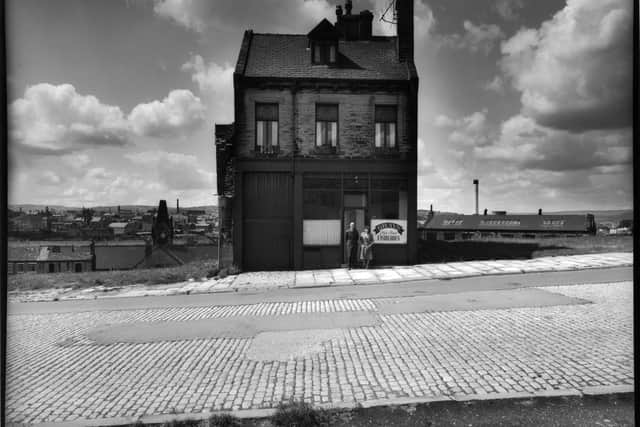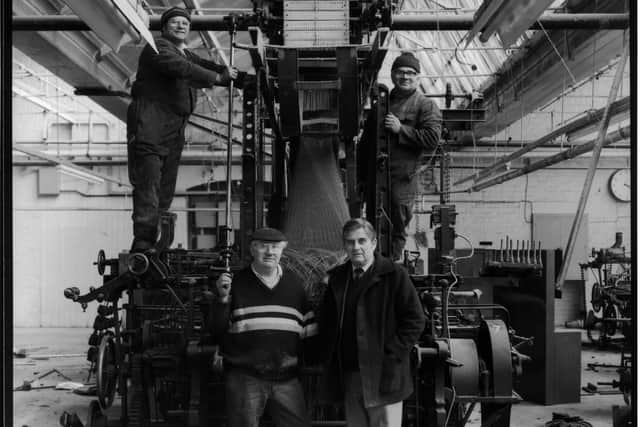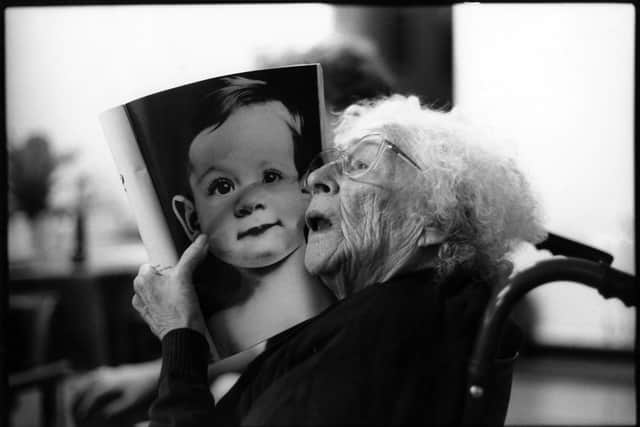Ian Beesley: Extraordinary photographs capture 48 years of Yorkshire's industrial decline from the last loom at Salts Mill to a slum clearance in Bradford
“It’s where I lived, and it’s where my family worked,” the renowned social documentary photographer said now. “I was always interested in photographing what I knew, who I knew, people I met.
“I felt it should be something I document.”
Beesley has spent 48 years recording Northern working life. Last year, a photographic exhibition at Salts Mill was to be among the most successful the gallery has seen.


Advertisement
Hide AdAdvertisement
Hide AdNow those pictures, and more, are to be published in a book by Bluecoat Press. LIFE, as a career retrospective, captures both an end to an era and a lost way of living.
There are the children, playing marbles on a street corner in 1977, while two women chat across the street. A bobbin doffer, at Thackley, and an abandoned clock at Manningham’s Lister Mills, standing as an untimely reminder as the bulldozers rolled in.
Through Beesley’s lens he documented a demise, to traditional industry in his home city.
“Born and brought up in Bradford, I could see the effects,” he said. “When I was setting out, the photographic ‘establishment’, based in London, wasn’t very interested in that demise.


Advertisement
Hide AdAdvertisement
Hide Ad“It was always ‘send a photographer North to capture how grim and awful it was’. If you lived here, that wasn’t the perspective. It was a very slow decline.”
Born 1954, Beesley had found work in his local sewage works, and it was here that colleagues had encouraged him to find a passion and engage in education.
With their help, he found photography and headed first for Bradford Art College, then Bournemouth & Poole College of Art. On graduation he was awarded the Kodak scholarship for social documentation. Thus began a lifelong study of the North’s cultural heritage.
His work, exhibited internationally, has been published in over 50 books. The exhibition at Salts, with 38,000 visitors over 10 weeks on home turf, stands out.


Advertisement
Hide AdAdvertisement
Hide AdThere were people he photographed when he first started out, showing their grandchildren. Others, on hearing there was a photograph of their grandfather, seeing it for the first time.
And one man, who stopped him in his tracks to say: “You won’t remember me, but I remember you”.
That man, working in a camera shop in Bradford back when Beesley was just beginning, had noted the keen young lad who kept coming back to buy black-and-white film.
“It makes me really proud to think that some of the film I sold you might have created some of these wonderful photographs,” the man had said then.


Advertisement
Hide AdAdvertisement
Hide AdTo Beesley, the film was shot in black and white because it was all he could afford. He would come across his subjects as he walked the streets, because he couldn’t run a car.
He has never counted his photographs. He reflects now that there must be tens of thousands. No, more, he amended, maybe 100,000.
LIFE features just 300 of them, over 200 pages, with all but the last two pages in black-and-white, which were all developed and printed by hand. There are working notes, and poems by long-term collaborator Ian McMillan.
“It was one of the hardest things to do, choosing and editing so many pictures and trying to put them into some sort of narrative,” said Mr Beesley.
Advertisement
Hide AdAdvertisement
Hide Ad“I spent from November to April in my attic laying photographs out on the floor to do it.”
LIFE, the book, is now to be launched in the space where it was born: the roof of Salts Mill. On July 9 there will be a ticketed talk and book signing. 1st edition hardback copies of the book are available at Salts Mill and at saltsmillshop.co.uk, priced £35.